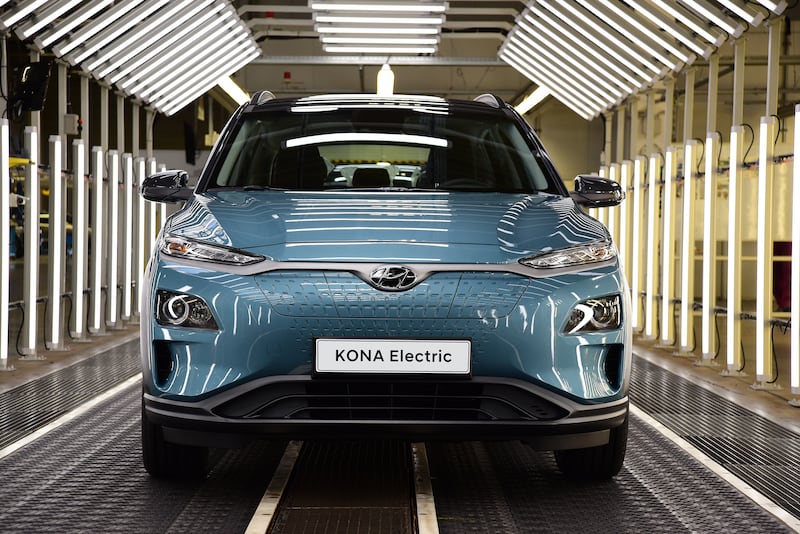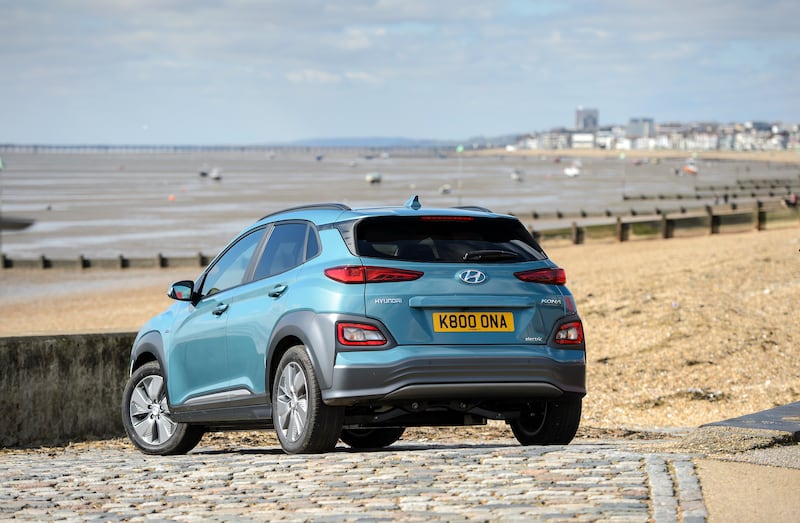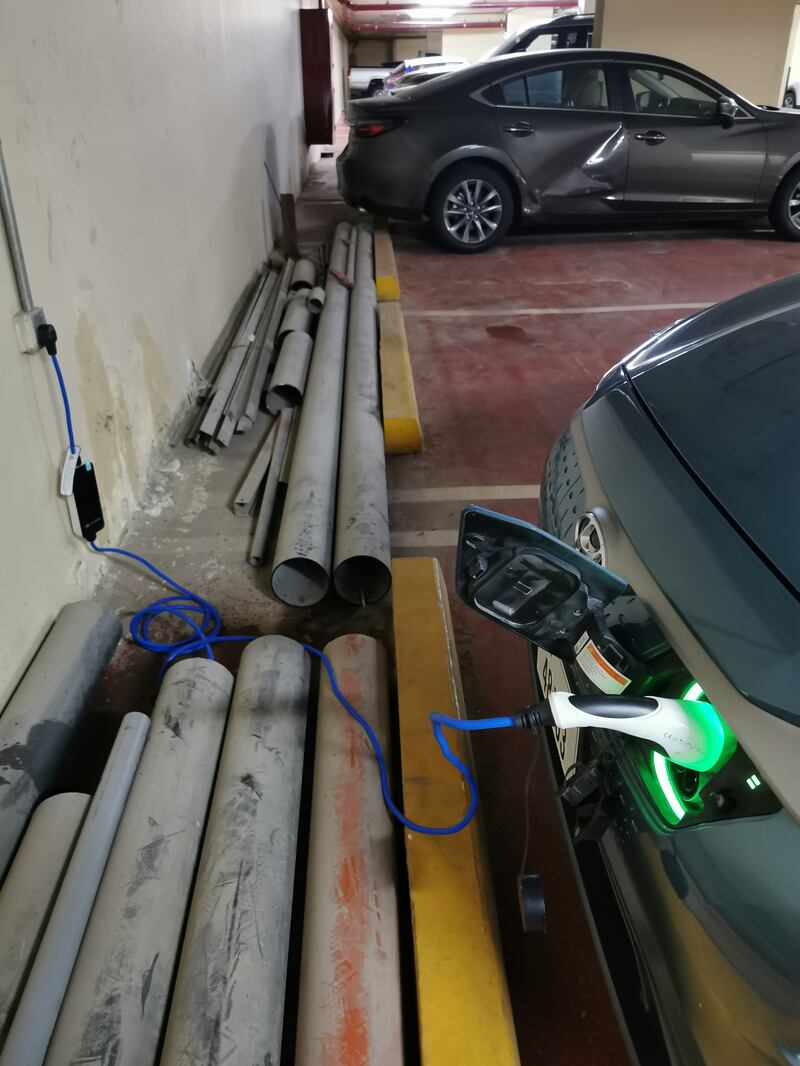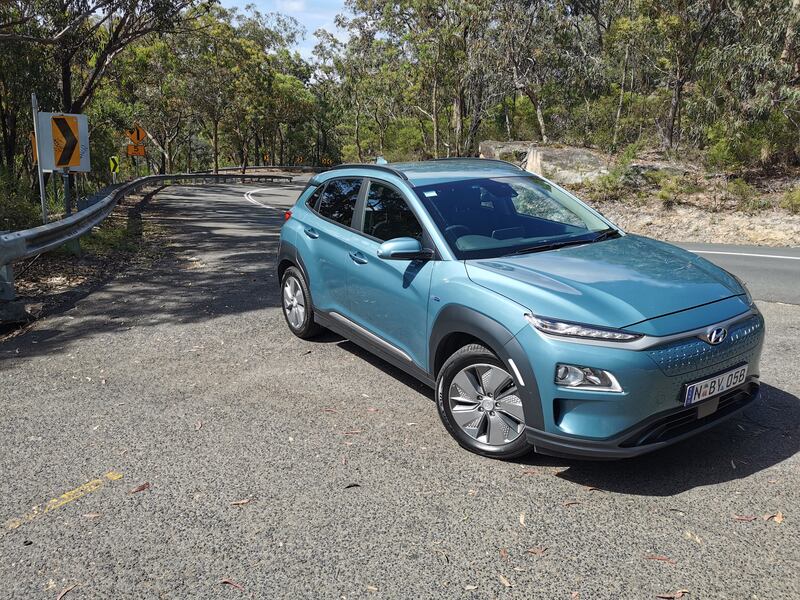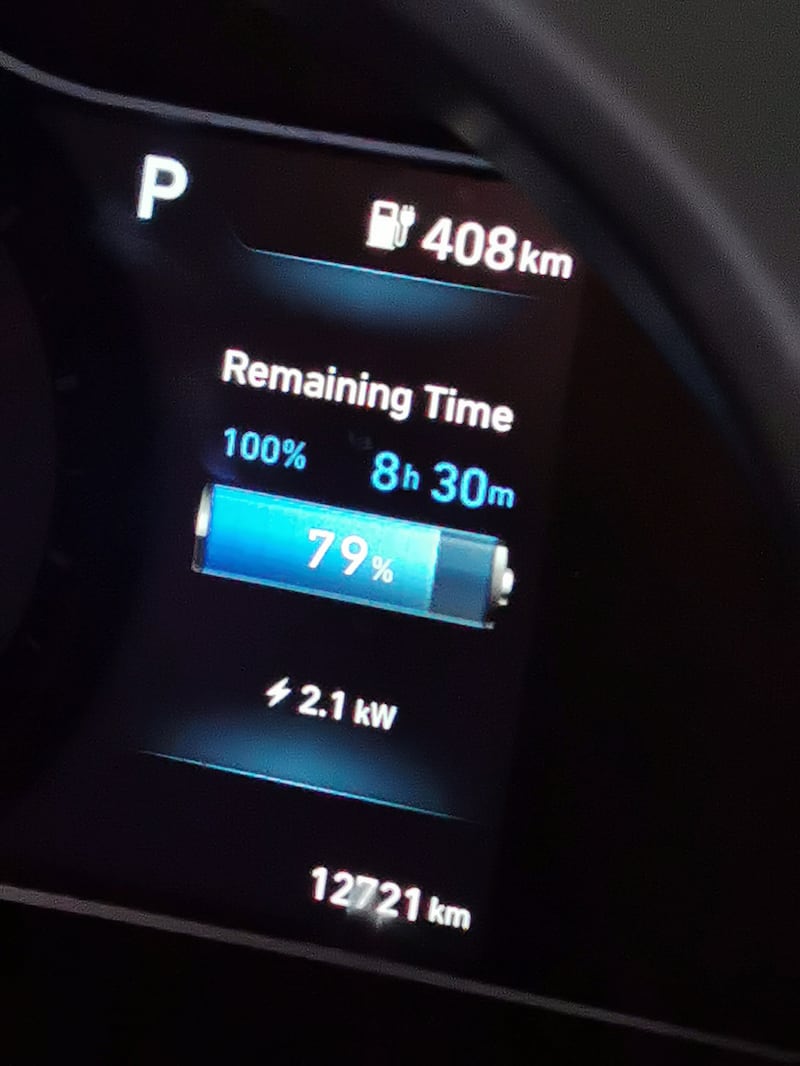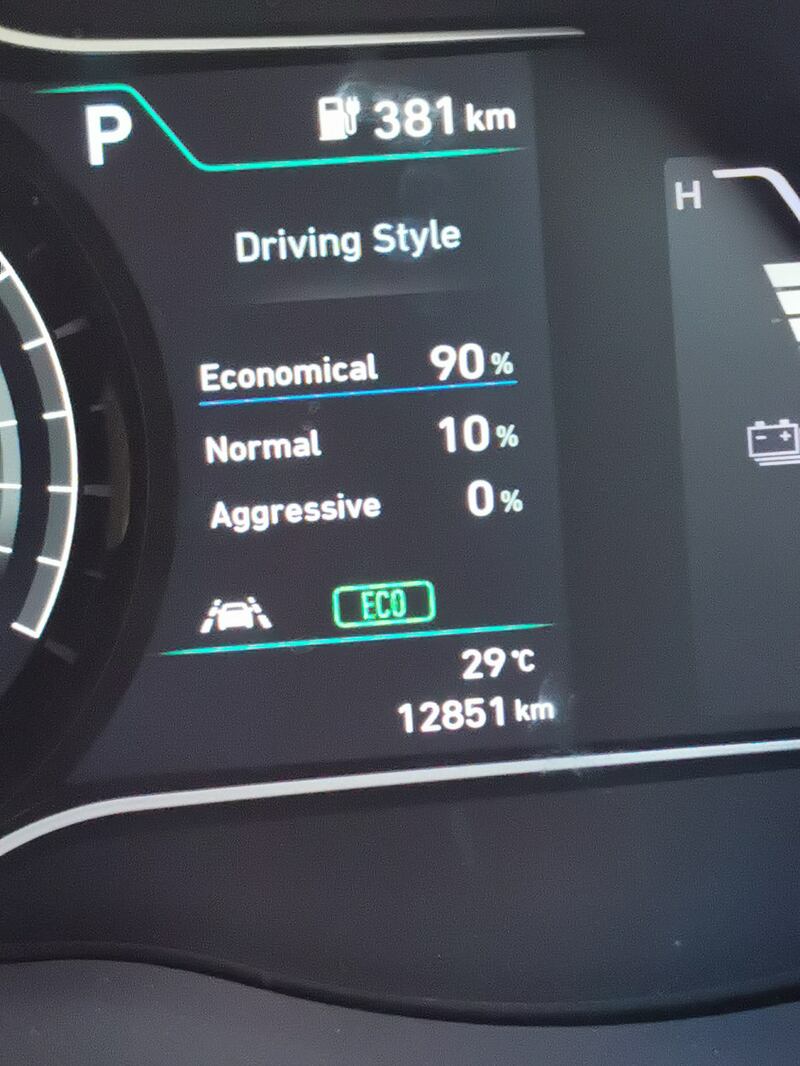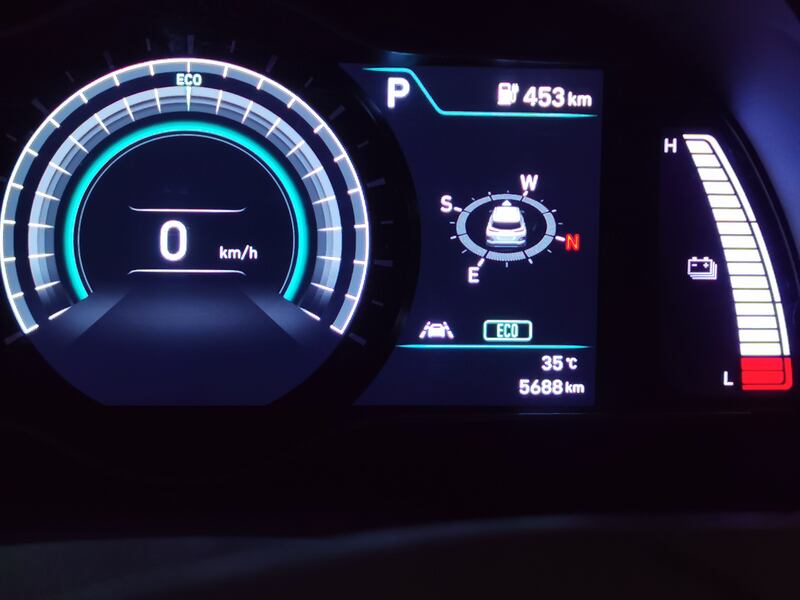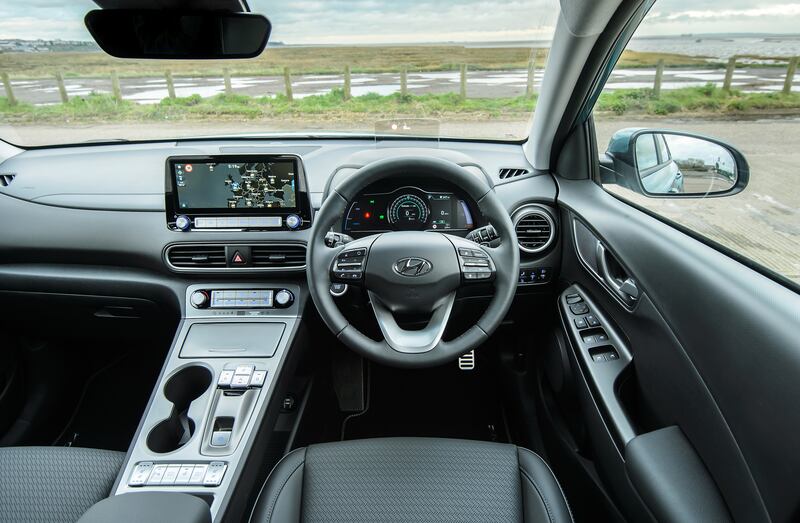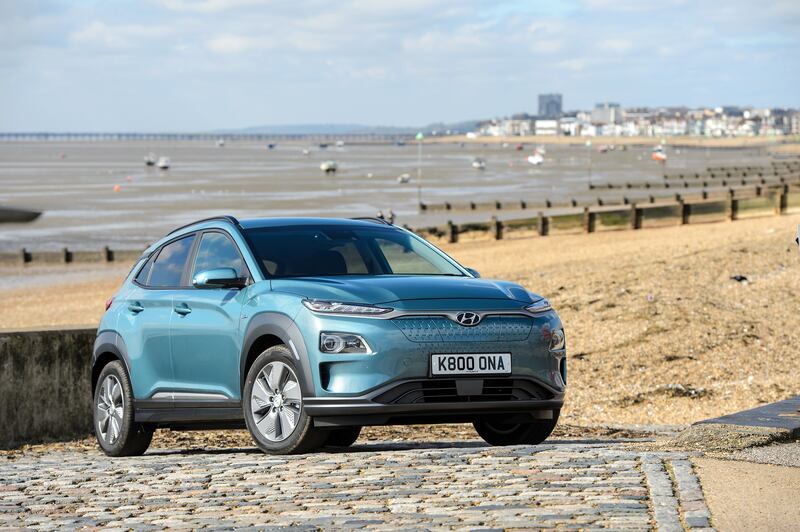The new Hyundai Kona Electric is a funny bundle of technology. Outwardly it looks like a humble, budget-priced estate and upon finding it has no combustion engine, being 100 per cent EV, it paints a picture of fairly mundane motoring, which as it turns out, is hardly the case.
Intuitive output
After some time spent living with this car, I found it to be one of the most driver-focused electric vehicles I’ve encountered, and it’s all to do with a pair of paddle shifts behind the steering wheel in the place you’d normally find the transmission shift levers.
In the Kona Electric, these are regen paddles to recover energy, which also slows the car down, acting like a hand-operated brake that allows you to modulate the car’s progress not just with the pedals at your feet, but also through these paddles.
Before you know it, and almost intuitively if you’re used to driving manual cars, you find you’re dancing between the pedals and the paddles, and suddenly the little Kona becomes an enjoyable, even involving, car to drive.
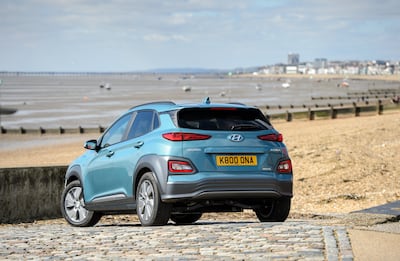
There are enough EVs in the market now to compare and contrast, and from my experience, the Kona Electric is the only one that has this hand-operated regen feature with others providing the energy recuperation through the drive modes that pre-install an amount of regen that comes back when you lift off the throttle.
In Normal or Economy modes, I found it was possible to bring the car to a complete stop from 90kph using just the left paddle and not the brake pedal, which in that time also recovered over one kilometre of energy to its range.
Very clever as this arrangement also gives the option to coast and not regen any energy if the driver doesn’t like the auto-braking feel that other EVs give when you lift off the throttle.
Hyundai claims the Kona has 480 kilometres of range from its 64kWh battery, which is similar to all Tesla models, the Jaguar I-Pace and the Nissan Leaf.
Importantly, though, while the Electric is just one model in the Kona range that includes conventional four-cylinder, petrol engines as well, this one is based on a skateboard chassis. Meaning that, crucially, this platform was originally designed with electric propulsion in mind and differs further, in that its battery is cooled by water rather than air.
Hot ride
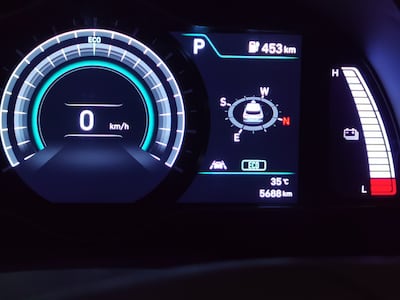
I drove the Kona Electric in Australia in February for three weeks where temperatures hovered in the mid to high 30s before sampling an identical car (right down to the colour and trim) in the UAE this month, when temperatures peaked beyond 50°C and there were some notable differences.
In Dubai, after parking the Kona, the electric fans kicked in under the car to cool the batteries, while the nifty function of having air-conditioning just for the driver if you’re the only one in the car to save power, was actually better in these hotter climes as it directed 100 per cent of the cool air through to just the driver’s side vents.
While the battery range posted after a full charge was similar despite the temperature differences, the Australian car returned better range, needing just one full charge from the wall outlet after more than 550km of driving, compared to the UAE where I had the test car for four days but needed to plug it in overnight on day three to get it back to 100 per cent.
It was a reminder of how EVs are impacted by the Middle East heat, depleting their range compared to summer in other countries, even those that are considered warm regions.
Comfy (for two) cabin
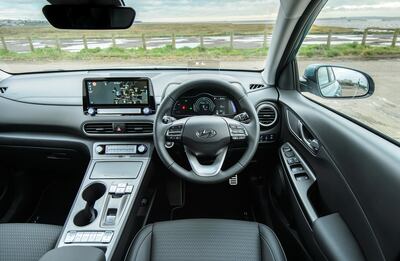
The Kona Electric is comfortable and roomy enough in the front, though the rear seats are slightly cramped and the boot is compact, offering 332 litres of space. The rear seats fold to increase the capacity if needed, and for many, as a daily run-around, there's plenty of space for the weekly shop or weekend sport run.
The centre console has an eight-inch touchscreen infotainment system with mapping that shows nearby charging stations as well as wireless smartphone charging that mirrors from both Android Auto and Apple CarPlay. It also displays information showing how efficiently you're driving and how much energy is being recovered.
Drive modes
Its performance was surprisingly good and seemed better than the factory’s claim of 6.7 seconds from 0 to 100kph with power equivalent to 201bhp and 395Nm of torque. Impressively, it only takes 5.8 seconds to accelerate from 50kph to 115kph using the torque that is an EV’s forte, and it has a top speed of 167kph.
The Kona defaults to Economy mode with every start, and once curiosity has been satisfied trying Sport for better performance and even Normal, I struggle to think of any reason to touch the Driving Mode button at all. The throttle response in Eco is stifled for maximum efficiency, but that inadvertently results in better throttle modulation for smoother driving anyway.
In Sport mode, you can still invoke silly amounts of wheel spin, but a more sensible approach brings plenty of low-down grunt, especially around town, not to mention more kilometres between charges.
Price points
The Kona is a perfect case study showing the price penalty EV buyers pay over conventional combustion-engined cars. A regular Kona, powered by a 1.6-litre, four-cylinder engine retails for Dh62,000 ($16,882), whereas the Kona Electric tested here is identical but for its EV drivetrain, and has a list price of Dh162,000.
Buyers who choose an EV to contribute to a cleaner environment should definitely consider the Kona Electric, as it is a brilliant, engaging, comfortable and practical urban commuter. However, those looking to purchase an EV thinking they’ll save money by charging it at home or at the mall instead of a petrol station need to factor in that extra Dh100,000 for the privilege.
The specs
Engine: 94kWh single electric motor
Power: 201bhp
Torque: 395Nm
Price: Dh162,000
